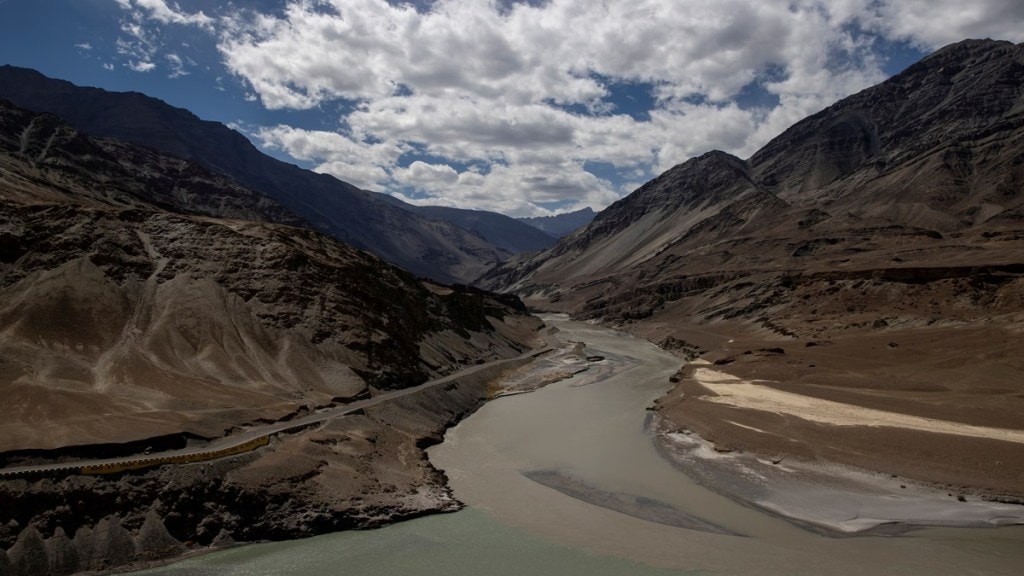By Ashish Kaul
In a move that could reshape South Asian geopolitics, India’s signal to renegotiate or cancel the Indus Waters Treaty (IWT) has raised alarms in Pakistan. Signed in 1960 with World Bank mediation, the IWT allocated three eastern rivers (Ravi, Beas, Sutlej) to India and three western rivers (Indus, Jhelum, Chenab) primarily to Pakistan. The treaty, having survived wars and decades of tension, now faces its gravest threat.
The Indus Basin is Pakistan’s lifeline. The western rivers supply about 76% of Pakistan’s water, irrigating 80% of its farmland, and supporting 90% of food production. With just 240 mm annual rainfall, Pakistan depends on these rivers for 90% of its freshwater, sustaining over 240 million people. Agriculture, which employs nearly 40% of the workforce and contributes 24% to GDP, hinges on the Indus canal system, one of the world’s largest. Dams like Tarbela and Mangla, fed by these rivers, also power a big portion of Pakistan’s electricity.
Pakistan’s water crisis is worsened by poor irrigation, water-intensive crops, and inefficient management. A 2018 International Monetary Fund report ranked Pakistan third among nations facing severe water shortages. Climate change and glacial melt, after initially increasing flows, are expected to reduce peak water levels by 2030.
If India abrogates the IWT and blocks the Indus, Jhelum, and Chenab, the fallout for Pakistan could be apocalyptic. Experts estimate a water availability drop of up to 70%, turning fertile provinces like Punjab and Sindh into arid wastelands. Agriculture, already fragile, would collapse. Wheat and rice, grown on 80% of cultivated land, would suffer massive yield losses, triggering food shortages and price spikes. The Food and Agriculture Organization estimates a 50% irrigation cut could halve output, plunging millions into hunger and poverty.
Rural populations, 68% of Pakistan’s total, could face mass displacement. Cities like Lahore and Karachi would absorb climate refugees, straining infrastructure and triggering unrest. The loss of hydropower, which generates 30% of electricity, would cause blackouts, crippling industry and deepening economic turmoil. Social media reflects the panic, with dire predictions of Pakistan becoming a “desert” or “mortgaged house”.
India’s limited infrastructure amplifies the risks. It lacks large reservoirs to store water from the Indus, Jhelum, and Chenab beyond a few days. While run-of-the-river hydropower projects like Kishanganga and Ratle are allowed, they have limited storage. Existing large dams like Bhakra and Pong lie on the eastern rivers and are irrelevant to western river control.
If India attempts to block or divert these rivers, its infrastructure may be overwhelmed, especially during monsoons. Overflow would force massive water releases downstream to avoid domestic flooding, particularly in Jammu and Kashmir. This could trigger devastating floods in Pakistan’s low-lying Punjab and Sindh. The 2010 floods, which killed 2,000, serve as a grim precedent. Pakistan has long accused India of mismanaging water releases, though India denies this.
Pakistan’s flood defences are fragile. The Indus River System Authority is marred by inefficiency and corruption. Dams are poorly equipped for flood control, and outdated warning systems leave communities exposed. A 2022 flood, displacing millions, highlighted these weaknesses. If India’s water releases coincide with monsoon rains, the flooding could destroy homes, crops, and infrastructure on a vast scale.
India’s shift on the IWT stems from strategic, environmental, and security concerns. New Delhi cites demographic shifts, hydropower needs, and cross-border terrorism, particularly after incidents like the 2019 Pulwama attack. Indian leaders have issued strong warnings. PM Narendra Modi once famously said that “blood and water cannot flow together”. In 2019, Union minister Nitin Gadkari even threatened to divert water to Indian states.
But India faces constraints. Beyond infrastructure, cancelling the treaty could hurt its global image, especially as it seeks a UN Security Council seat and hosts G20 events. Neighbours like Bangladesh, Nepal, and China may view such a move warily. China, which is upstream on the Indus and Sutlej, could retaliate with its own dam-building spree.
The World Bank has urged bilateral resolution. But Pakistan, citing its weaker position, demands third-party arbitration. India has suspended Permanent Indus Commission meetings since 2022 and refuses to engage the Permanent Court of Arbitration, suggesting a hardening stance. If talks fail, India could divert water or, in extreme cases, physically block flows which requires unprecedented engineering.
The risks to Pakistan are existential. A water cut-off would reduce per capita availability below the critical 1,000 cubic metre threshold, plunging it into severe scarcity. Food and energy crises could destabilise the fragile government. Militant groups might exploit unrest, intensifying regional insecurity. If flooding follows due to India’s infrastructure limits, the human toll would soar, displacing millions.
Climate change adds urgency. Melting glaciers and erratic rains already strain the Indus. By 2030, Pakistan could face a 50% water deficit. The IWT, conceived before climate change was understood, lacks provisions for joint crisis management. Experts urge treaty reform to include data-sharing and disaster coordination. But mistrust makes cooperation unlikely.
The IWT, once hailed as a model of cooperation, is teetering on the brink of collapse. The world must act. The World Bank and global powers must mediate before this time bomb explodes. For India, using water as a weapon may bring momentary leverage, but at immense humanitarian and diplomatic cost.
The writer is senior fellow, Centre for Cultural Resources & Training, and post-doctoral research scholar on Kashmir.
Disclaimer: Views expressed are personal and do not reflect the official position or policy of FinancialExpress.com. Reproducing this content without permission is prohibited.

